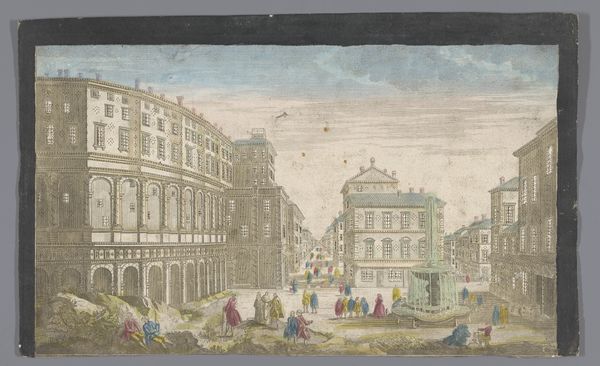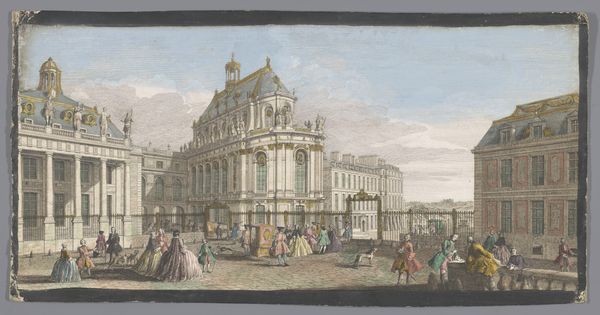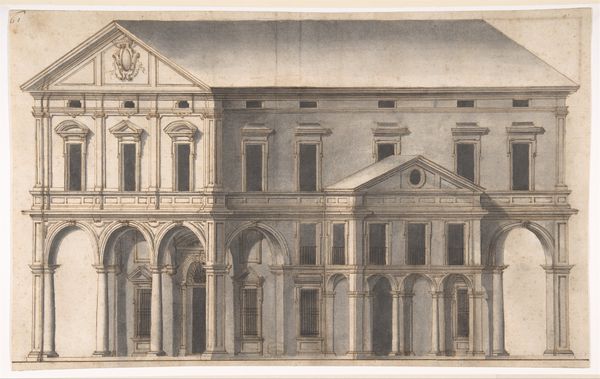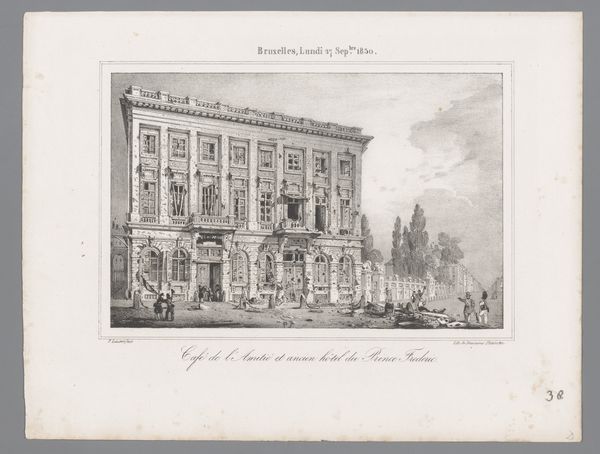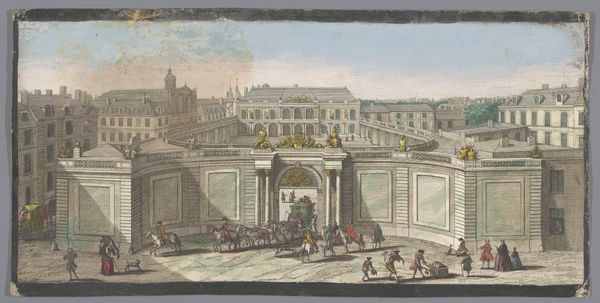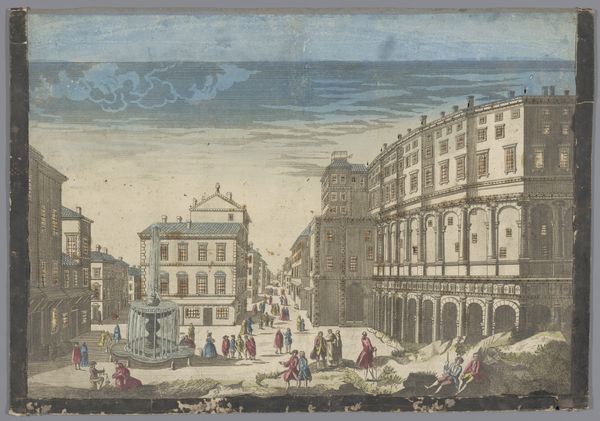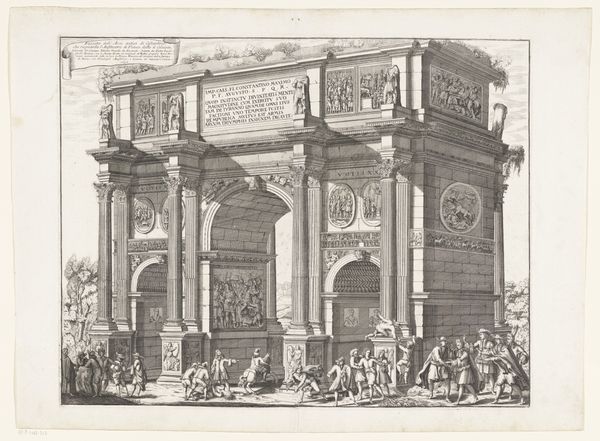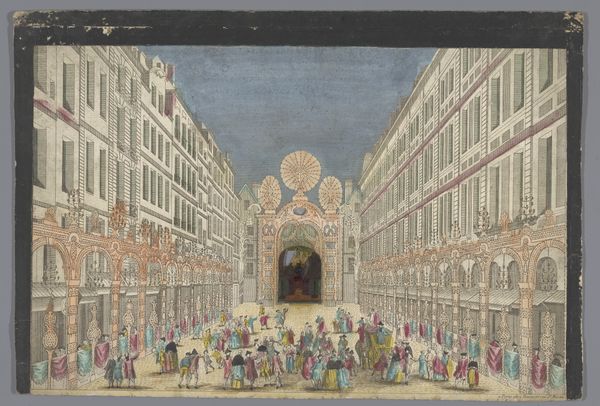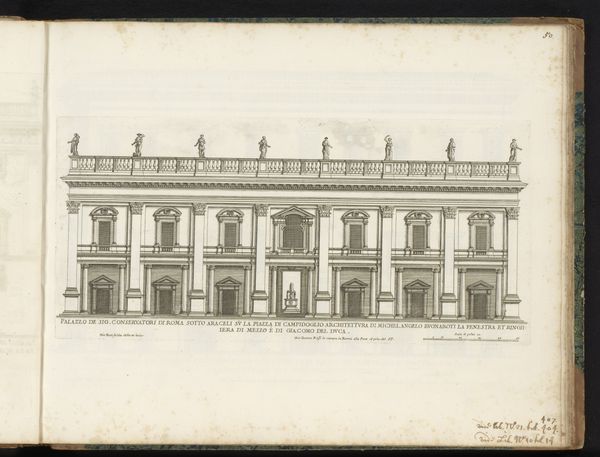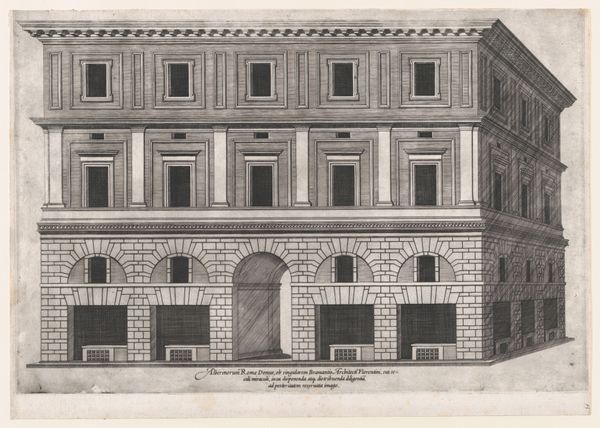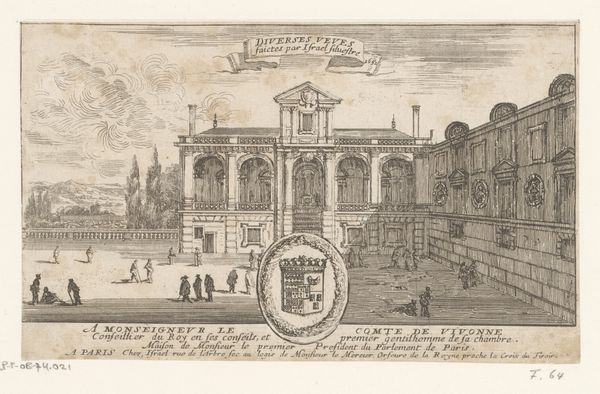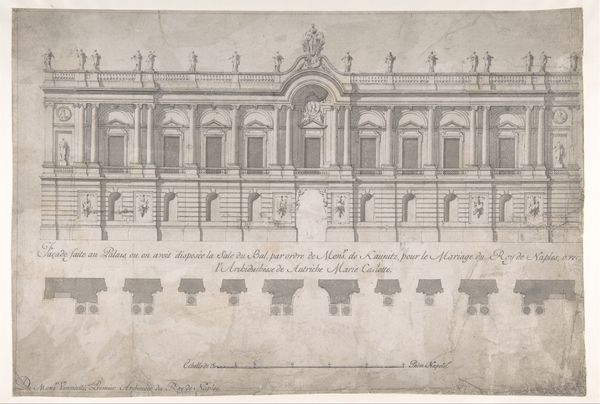
drawing, coloured-pencil
#
drawing
#
coloured-pencil
#
coloured pencil
#
cityscape
#
genre-painting
#
watercolor
#
rococo
Dimensions: height 274 mm, width 437 mm
Copyright: Rijks Museum: Open Domain
Curator: This delightful drawing offers a glimpse into 18th-century Lyon. Entitled "Gezicht op de Beurs te Lyon," it roughly translates to "View of the Lyon Stock Exchange," dating from around 1745 to 1775. It's crafted with colored pencils. Editor: Immediately, the symmetry strikes me. The balanced architecture almost feels like a stage set, and all of these finely-dressed individuals clustered in the square exude the feel of an exciting event or a place to be. Curator: Absolutely, the balanced composition emphasizes the imposing presence of the Stock Exchange. Notice the intricate architectural details and the row of maritime paintings decorating the facade, almost like advertisements for global trade. Editor: It’s curious how these paintings—almost like windows to the world—advertise distant ventures, adding a layer of romanticism to commerce, the cultural importance and reach of this market extending to sea. Also the choice of color in general communicates Rococo. Curator: Indeed. These emblems tap into the public imagination surrounding wealth and exploration. This kind of visual messaging helped shape a positive image of the burgeoning financial industry. Consider how these symbolic representations reinforce a feeling of prosperity and progress in people’s minds. Editor: Which could speak to some propagandistic intent for the economic infrastructure and systems; the symbolic effect extends far beyond an attractive composition. The city-scene offers a vivid panorama of an important building and market in it's full Rococo regalia. The gathering feels crucial and not a mundane cityscape by any measure. Curator: It speaks to the building's influence, definitely. This artwork not only reflects architectural aesthetics but also the spirit and psychology of 18th-century capitalism as well as public reception to the market and it's structure. It provides insight into the era's visual culture, communicating both the prestige and romantic allure tied to trade. Editor: I agree entirely. Looking closely reminds me that art doesn't exist in a vacuum; how cultural values and institutional powers inevitably meet, particularly when we unpack this kind of meticulously staged setting and well thought-out symbology.
Comments
No comments
Be the first to comment and join the conversation on the ultimate creative platform.
